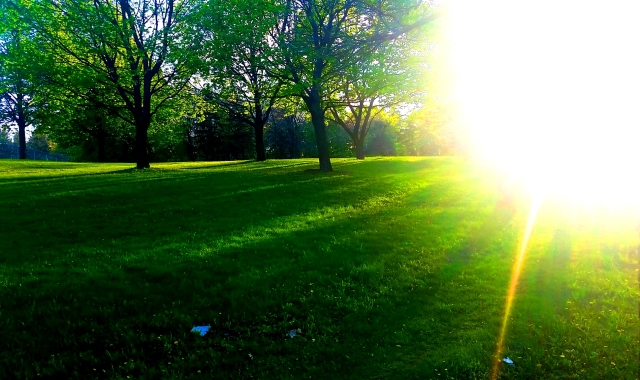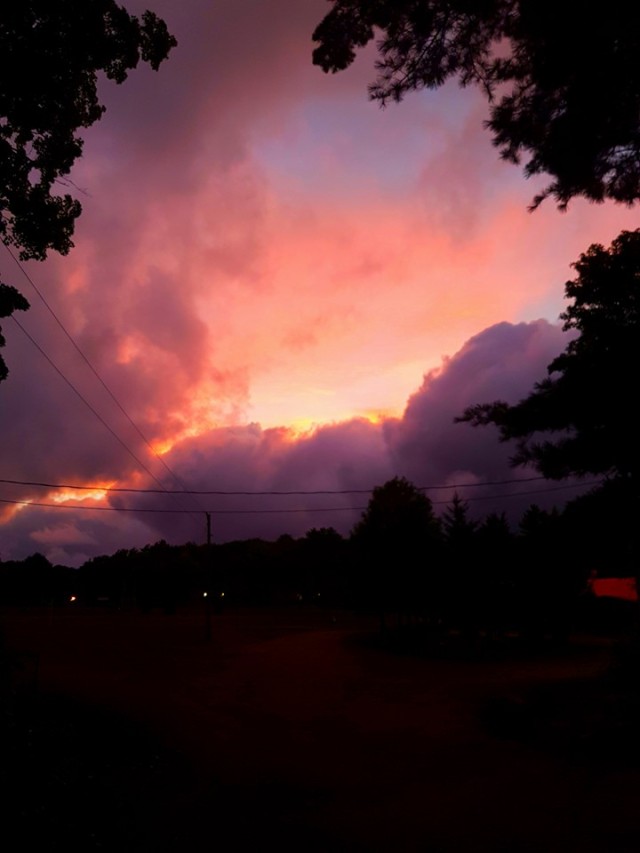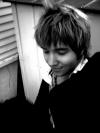(Before It's News)
By Adam J. Pearson
When no discriminating thoughts arise,
the old mind ceases to exist.
When thought objects vanish,
the thinking-subject vanishes:
As when the mind vanishes, objects vanish.
Things are objects because of the subject (mind):
the mind (subject) is such because of things (object).
Understand the relativity of these two
and the basic reality: the unity of emptiness.
In this Emptiness the two are indistinguishable
and each contains in itself the whole world.
If you do not discriminate between coarse and fine
you will not be tempted to prejudice and opinion.
~ From Hsin Hsin Ming by Seng-T’san, the Third Patriarch of Zen
Beginning to wake up to the illusory mechanics of selfing, the mental process that produces a sense of being a separate entity called “me,” changes everything. It radically reshapes the whole texture of the seeming experience of living a human life. It really does. The whole quality of lived experience transforms and so does the mind’s relationship with thought. Without doing anything, the light of what we are reveals the lightness of all the heaviness that previously seemed to be.
For many years, a seemingly epic struggle was going on in the mind with the question: “Should I believe in God or should I disbelieve in God?” This question was felt to be a very heavy and serious one and the answer to it seemed to have tremendous importance to and for “me.” “My” very identity was on the line! Or so it seemed…
Now, the relationship to the thought is totally different. Heavy urgency has been replaced with innocent curiosity: “What takes itself to be a believer or a disbeliever? What thinks it’s going to become a Christian or an atheist? Is that what I am, as what’s awake to the questions? A believer or a disbeliever that can be defined by a belief or a disbelief? How could that be?”
These questions point back into the silence of not-knowing. Not because they express a ‘deeper knowledge,’ but because they point beyond the knowledge that gives rise to the questions. What knows is unknowable and from the unknowable, how can such questions arise? As U.G. Krishnamurti says, “the questions you ask are born out of the answers you already have.”

Identifying as a believer, as a disbeliever, as a Christian, or as an atheist, is one illusory step removed from the reality of what’s awake to this moment. And one step is one step too too many. It’s the lightest bit of seeming weight added on to the weightlessness of our nature. One is one too many. It’s a surplus load. Waking up to being awake is a process of paring down, stripping away, with absolute economy, the economy of the absolute. As it proceeds, sensitivity to lingering weights of identification grows stronger, and so does the deep trust in what we are. This trust allows those identities to fall away when they are not seen from, but seen through.
Seeing through the lens of identifying as a ‘someone’ is like looking through blurry glasses; the identification is the blurry lens itself. It distorts all that we seem to see as pertaining back to ‘me.’ When the identification it falls away, as when the glasses are removed, vision is clear. One lens is one too many for perfect vision.
Traveling lighter involves the gradual stripping away of every cherished identity, every story about being a certain kind of “me.” Truth entails nothing less, but it is so gentle that it never asks “you” and “I” to give anything up. Identities effortlessly fall like leaves in autumn when they are seen not to be attached to any tree. The tree the leaves seem to grow out of is the tree of ‘me,’ the feeling of being a long-lasting separate entity that is produced by our thinking. It’s not that we consciously drop these identifications; they drop on their own. Our true nature is not a tree with many leaves. It’s an emptiness so empty that it has no bough on which a single leaf could ever take hold.
One day the Fifth Patriarch of Zen told his monks to express their wisdom in a poem. Whoever had true realization of his original nature (Buddha Nature) would be ordained the Sixth Patriarch. The head monk, Shen Hsiu, was the most learned, and wrote the following:
The body is the wisdom-tree,
The mind is a bright mirror in a stand;
Take care to wipe it all the time,
And allow no dust to cling.
The poem was praised, but The Fifth Patriarch knew that Shen Hsiu had not yet found his original nature. On the other hand, Hui-Neng couldn’t even write, so someone had to write down his poem, which read:
Fundamentally, no wisdom-tree exists,
Nor the stand of a mirror bright.
Since all is empty from the beginning,
Where can the dust alight?
Thus it was that the illiterate Hui-Neng became the Sixth Patriarch of Zen.
The dust is like identifications; they never take root when they’re seen to be empty, to not point to a ‘me.’ The seeds don’t germinate; the leaves cling to no tree. And when they have nowhere to land, how can they be wiped away? Falling away isn’t the product of an act of wiping. Seeing the emptiness is more than enough. Then what is there to wipe away?

When the mind entertains the possibility that we might not be the “me” we long-believed we were, life reveals a quality of what Paul Hedderman calls “traveling lighter.” Traveling lighter doesn’t mean we have a sense of being a traveler who’s the one traveling lighter. Even the identity of being a traveler on a journey is one piece of baggage too heavy for this backpack. That goes too.
It’s not that we know God and become a knower of God. Even the identity of being a ‘knower of God’ goes as well. Seeming to be a separate knower is one step too far removed. The separateness it presupposes is one illusion too many. “To know God is to be God,” as Ramana Maharshi says, not as a human being knowing God, but as what’s awake to the appearance of seeming to be a human being.
St. Francis of Assisi is reported to have said that “what’s looking is what you’re looking for.” What wants to know “what’s looking” as an object of knowledge is the human mind; as what we truly are, there’s not even a knowing of God, there’s no knowledge presupposing a ‘knowing subject’ that knows an object of knowledge. It’s all stripped down. “You” as a ‘knower’ and “God” as an object of knowledge both get flushed together. Both leaves fall in the autumn of waking up. Knower and known blow out together, like the gentle out of a fleeting candle flame.
No-thing remains, and all ideas of it being known in some way go too. What you are cannot be known, what knows cannot be known; and in the unknown of what you are, both knower and known dissolve. One idea about what you are is one idea too many, one piece of seeming knowledge about the unknowable is one piece too many. All of this accrued ‘information’ about what you are gets pared down and we’re not “the one paring it down;” there’s no credit in it for us, nowhere to plant a flag of “I did this.”

The words of old Masters fall like autumn leaves with the mental fixations that clung to them as concepts. What need is there for old words when the present awakeness shines the same now as it did then?
And yet, the old words point to what we are now. Now and only now. As reminders, they keep teaching, although the teachers may be long dead. The spiritual path falls away with the identification as a traveler on a path, that believes it can go somewhere it isn’t now, get something it doesn’t have, or become something it isn’t already. “The truth is a pathless land,” as Jiddu Krishnamurti said. “This is not a path to illumination,” says Paul Hedderman, “but it illuminates every path you seem to be on.”
Being an ‘enlightened person’ is one step too many away from being the aware ‘light’ that illuminates both the light and the darkness. “I am emptiness” is one thought too full for the emptiness from which the thought arises. Awareness does not need to say “I am awareness.” It appears as all words and all forms, effortlessly and without investment, and yet its eternal silence remains ever unbroken. This silence sings as all sounds and yet no singer is found. Could it be so simple? It is. And that’s it’s challenge to a complex mind.
Consider movement stationary
and the stationary in motion,
both movement and rest disappear.
When such dualities cease to exist
Oneness itself cannot exist.
To this ultimate finality
no law or description applies.
~ From Hsin Hsin Ming by Seng-T’san, the Third Patriarch of Zen
Taking ourselves to be a ‘someone’ of any kind is one step too many away from the no-place, no-thing, no-one that we are. One conjuration of a false identity out of no-thing is one too many. It doesn’t matter what the content of the identification is. As the Course says, the forms are different, but the content is the same. And the content is empty so all the forms are empty too.
It’s not that we go from seeing all as two to seeing all as One. One is One too many. Not-two, not-one is the economical Way.
In this world of suchness
there is neither self nor other-than-self.
To come directly into harmony with this reality
just say when doubt rises “not two”.
In this “not two” nothing is separate,
nothing is excluded.
~ From Hsin Hsin Ming by Seng-T’san, the Third Patriarch of Zen
Knowing that what you are cannot be known and simply being what you are instead of striving to know it is more than enough. The mental process in the head keeps suggesting that you’re various kinds of someone, but the vibrancy of being no-one shines through the suggestions and shows them to be nothing.

Nothing is what’s looking. And what’s looking is what we’re looking for. We don’t trust or believe that, so we look for something for the someone we think we are. But what we seek–freedom, peace, and lasting relief–isn’t found in something. It’s found in nothing. Being the no-thing that we always were, ordinary, everyday awakeness to whatever appears, is more than enough. And “nothing,” as Paul Hedderman says, “is the gift that keeps on giving.”
Living realization is very different from living as a “realized person.” The idea of being a ‘realized preson’ is a surplus add-on to realization. It’s an interpretation of the uninterpretable. It’s a story of having an identity as special person who has realized something.
When teachers say there’s “no one to realize and nothing to realize,” they’re not saying there’s no realization!
There is. But “you” don’t get anything out of it, and it’s not a thing you can get. It’s a verb. It’s being awake to being awake, nothing less, nothing more. “What’s looking is what you’re looking for.” This statement isn’t pointing to the ‘someone’ we take ourselves to be, the “me” that’s trying to get, become, or acquire themselves into another state. It’s pointing to what’s awake to all the states. It’s silent to all the meanings the mind gives to the images it sees and takes itself to be. What we are is so empty that it’s empty even of emptiness.
Emptiness here, emptiness there,
but the infinite universe
stands always before your eyes.
Infinitely large and infinitely small;
no difference, for definitions have vanished
and no boundaries are seen.
~ From Hsin Hsin Ming by Seng-T’san, the Third Patriarch of Zen
Our dilemma is that we want to wake up as the “me” we take ourselves to be. As Paul Hedderman says, “we want to be there to experience our own absence” and it doesn’t work like that. What wakes up isn’t “me.” “Me” is the dream we wake up from. Adam doesn’t become awake; what’s awake is awake to seeming to be Adam.
Awakeness isn’t “mine;” it’s not an object to itself. What’s awake isn’t something, what’s aware isn’t a thing. It’s no-thing and no-one, the simple awakeness that’s awake to itself appearing as everything. If this one small thing is seen, the formerly opaque words of the Zen masters, the Dzogchen tulkus, and the Advaita gurus appear as clear as clear can be.
“Swallowing the ocean in a single gulp” as the old Zen koan goes, doesn’t mean that a body has to magically drink a whole ocean. How could it? It’s simply seeing that we’ve only ever been the boundariless awareness in and as which the ocean seems to appear. Then not even a gulp is needed. One gulp is one too many.
The gulper and the ocean both appear in the same awake space. And that awake space will never be known by the gulper! “To know it is to be it” and to be it is to see it can’t be known. Then no “knowledge of self” is more than enough. Even to call it “awareness” or “awakeness” and evoke a concept of what that means is one name too many. Even “awake space” is one name too many. In true not-knowing, how can we reach even for these? We’re utterly disarmed. We have nothing to raise. Being no-thing doesn’t require even that.
When ideas of being a believer and a disbeliever both get flushed out, what remains?
Opening a mouth, or moving a finger on a keyboard to answer is one movement too many.
“Make the smallest distinction,
and heaven and earth are set infinitely apart.”
~
From Hsin Hsin Ming by Seng-T’san, the Third Patriarch of Zen


Read More from Adam Pearson at http://philosophadam.wordpress.com/
Source:
https://philosophadam.wordpress.com/2016/09/25/one-step-is-one-too-many-waking-up-as-stripping-away/










